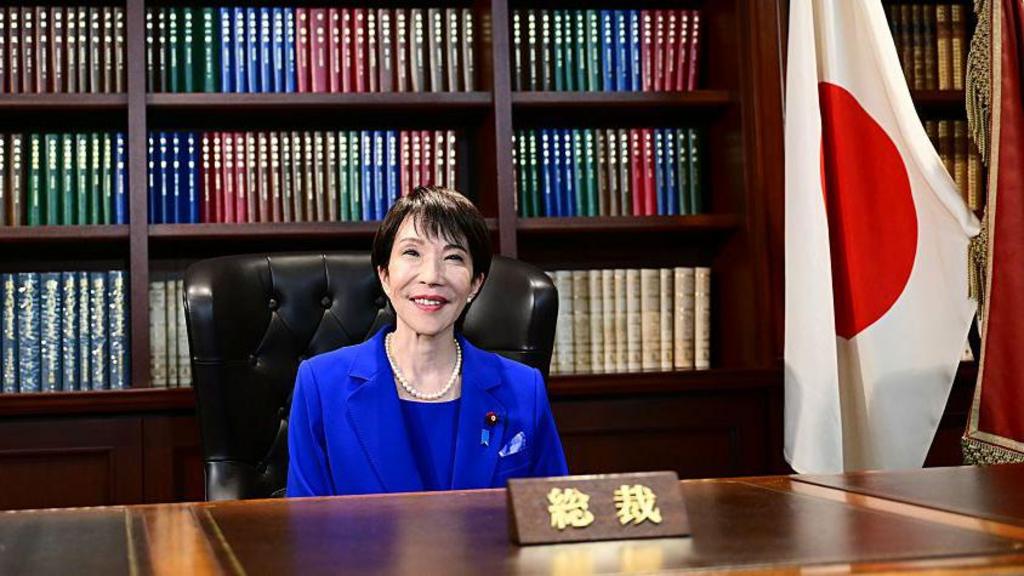Drawing inspiration from Margaret Thatcher, Sanae Takaichi aims to become Japan’s “Iron Lady.”
After two previous attempts, Sanae Takaichi has realized a long-held ambition.
The 64-year-old was elected leader of the Liberal Democratic Party (LDP) on its 70th anniversary, positioning her to potentially become Japan’s first female prime minister.
A former government minister, TV host, and one-time heavy metal drummer, she now faces the challenge of leading a party working to regain voter trust amidst scandals, while also addressing the rise of the far right.
Born in Nara Prefecture in 1961, Takaichi’s upbringing, with a father as an office worker and a mother as a police officer, was far removed from the world of politics.
Once an avid heavy metal drummer, she was known for carrying numerous drumsticks, often breaking them during intense performances. She also enjoyed scuba diving and was a car enthusiast, with her beloved Toyota Supra now on display in a Nara museum.
Prior to entering politics, Takaichi briefly worked as a television host.
Her political awakening occurred in the 1980s during US-Japan trade friction. Seeking to understand American perspectives on Japan, she worked for Democrat Patricia Schroeder, a congresswoman known for her critiques of Japan.
Takaichi observed Americans confusing Japanese, Chinese, and Korean languages and cuisines, noting how Japan was frequently grouped together with China and South Korea.
“Unless Japan can defend itself, its fate will always be at the mercy of shallow US opinion,” she concluded.
She first ran for parliamentary office in 1992 as an independent, but was unsuccessful.
She persisted, winning a seat a year later and joining the LDP in 1996. Since then, she has been elected as a Member of Parliament 10 times, losing only once, and establishing herself as a prominent conservative voice within the party.
She has also held senior government positions, including minister for economic security, state minister for trade and industry, and a record-breaking tenure as minister for internal affairs and communications.
In 2021, Takaichi initially entered the LDP leadership race but lost to Fumio Kishida. She tried again in 2024, leading in the first round of voting but ultimately losing to Shigeru Ishiba.
This year, on her third attempt, she secured victory, placing her on track to become Japan’s first female prime minister pending parliamentary confirmation.
“My goal is to become the Iron Lady,” she stated to a group of schoolchildren during her recent campaign.
Takaichi is a staunch conservative who has consistently opposed legislation allowing married women to retain their maiden names, arguing it undermines tradition. She also opposes same-sex marriage.
However, she has recently adjusted her stance. During her campaign, she pledged to make babysitter fees partially tax-deductible and proposed corporate tax breaks for companies that provide in-house childcare services.
Her family and personal experiences inform her policy proposals: expanding hospital services for women’s health, giving household support workers greater recognition, and improving care options for Japan’s aging society.
“I have personally experienced nursing and caregiving three times in my life,” she said. “That’s why my determination has only grown stronger to reduce the number of people forced to leave their jobs due to caregiving, child-rearing, or children refusing to attend school. I want to create a society where people don’t have to give up their careers.”
As a protégé of the late Shinzo Abe, she has pledged to revive his “Abenomics” economic strategy of high public spending and low-cost borrowing.
She has been a frequent visitor to the controversial Yasukuni Shrine, which honors Japan’s war dead, including convicted war criminals.
She has also advocated for easing constitutional restrictions on the country’s Self-Defense Forces, which are currently prohibited from possessing offensive capabilities.
Since its founding in 1955, the LDP has dominated Japanese politics, but it is currently losing ground amidst frustration with a sluggish economy, demographic decline, and social discontent.
Takaichi represents the right-wing faction of the LDP, and by electing her, the party hopes to regain conservative voters who have drifted towards the far-right Sanseito party.
Sanseito, campaigning on a “Japan First” platform, has recently grown from one to 15 seats, drawing away conservative voters. The LDP has lost its majority in both houses of parliament.
Takaichi herself acknowledged the issue in a speech after winning the first round of voting: “We have received particularly harsh criticism from our core supporters, conservatives, and party members.”
“The LDP must change for the sake of Japan’s present and future. We will always put the national interest first and manage the country with a sense of balance.”
Parliament is expected to confirm her as prime minister on October 15.
The drinks giant said this week that the attack had a major impact on its domestic operations.
Pop group AKB48 asked fans to pick their next single from a song written by humans and another by AI.
The number of Japanese centenarians rose to 99,763 in September, with women making up 88% of the total.
Japan’s next leader will face the challenge of steering a much weakened government.
The prime minister had struggled to inspire confidence as Japan faced economic headwinds.

